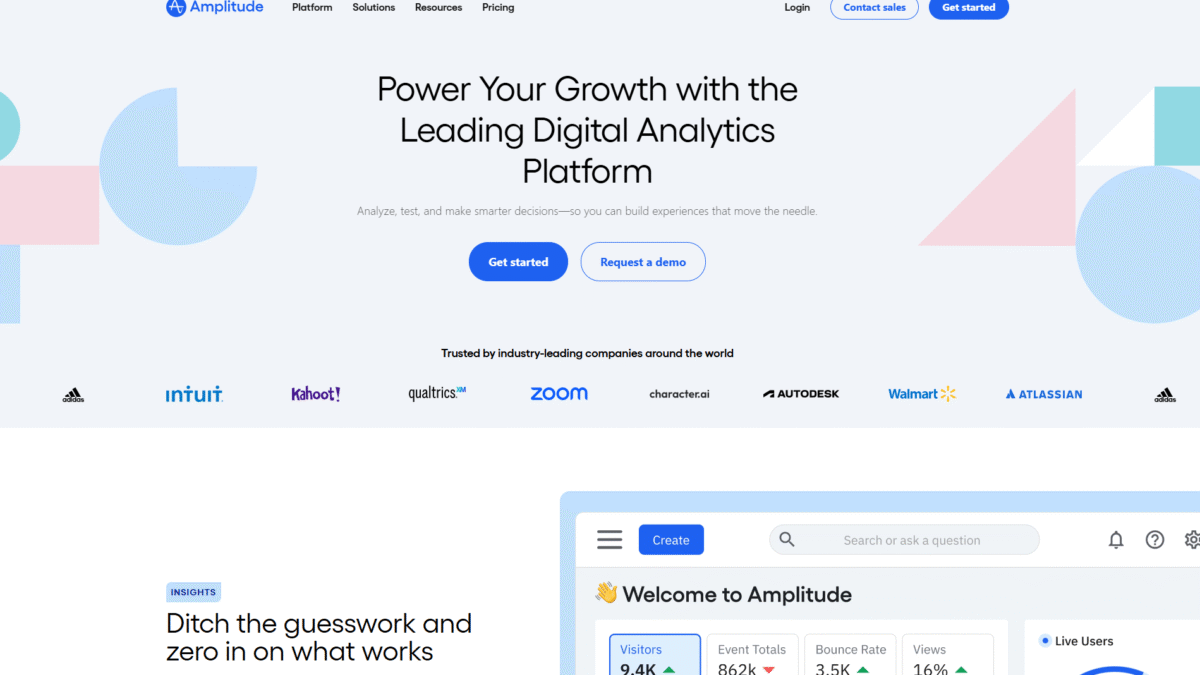
Funnel Analytics Strategies for Higher Conversions
In today’s data-driven world, mastering funnel analytics is crucial for unlocking conversion growth at every stage of the customer journey. With the right insights, you can pinpoint drop-off points, refine messaging, and deliver experiences that steer users toward purchase. Harnessing Amplitude’s powerful event tracking and visual funnel reports makes this process seamless—Get Started with Amplitude for Free Today and see how one line of code can illuminate the path to higher conversions.
Understanding Funnel Analytics
Funnel analytics is the practice of mapping out each step users take toward a desired goal—such as signing up, upgrading, or completing a purchase—and measuring the percentage who advance through each stage. Unlike generic page-view metrics, funnel analytics focuses on behavior sequences, revealing where users hesitate or abandon the flow. This clarity empowers teams to prioritize hypotheses, run experiments, and optimize precisely where it matters most.
Key Strategies to Optimize Every Stage
1. Define Clear Conversion Points
Start by outlining the critical milestones in your user journey. Whether it’s “Add to Cart,” “Begin Checkout,” or “Complete Payment,” assign each step a unique event in your analytics stack. Clarity here ensures accurate measurement and enables you to quickly identify the stages with the highest attrition.
2. Segment Your Audience
Not all users behave the same. Break down your funnel by key attributes—such as traffic source, geography, device type, or referral campaign—to uncover hidden trends. For example, mobile users may drop off sooner than desktop users, signaling UX optimizations like streamlined forms or mobile-friendly payment options.
3. Leverage Event Tracking
With Amplitude’s event tracking platform, capturing every click, tap, and conversion takes a single line of code. This precision lets you dig deeper than page views, understanding not just what happens but why. Set up custom events for button clicks, feature usage, or form submissions, and watch how each interaction feeds into your funnel analysis.
4. Session Replay for Behavioral Insights
Numbers tell you where users drop off, but session replay shows you why. Replay user sessions to see hesitation, form-filling errors, or confusing navigation paths. By combining funnel analytics with session replays, you can diagnose friction points and iterate on design solutions before they impact revenue.
5. A/B Testing and Experimentation
Once you identify a weak spot, put hypotheses to the test. Amplitude’s web and feature experimentation tools let you run A/B tests without sacrificing performance. Whether you’re tweaking a headline, altering CTA placement, or rolling out a new feature behind a flag, you’ll gather causal insights that drive measurable uplifts in conversion.
How Amplitude Empowers Funnel Analytics
Amplitude is built to remove the guesswork from funnel optimization. Its unified platform brings together:
- Product Analytics to transform every user action into actionable insights.
- Web Analytics that go beyond page views, revealing which campaigns and channels truly move the needle.
- Session Replay for a front-row seat to user behavior and frustration points.
- Experimentation tools, from A/B tests to feature flags, ensuring you ship only what works.
- Guides and Surveys to onboard users effectively and capture timely feedback.
- Data Governance and Integrations to keep your data clean, accurate, and connected across every tool in your stack.
- AI-Powered Insights that answer growth questions in natural language—no data science degree required.
Ready to put these capabilities to work? Get Started with Amplitude for Free Today and harness a leading digital analytics platform to optimize every funnel step.
Real-World Impact: Case Study Highlights
Companies across industries have leveraged Amplitude’s funnel analytics to drive remarkable results:
- An e-commerce brand reduced cart abandonment by 18% after identifying form-field friction through session replay and A/B testing a streamlined checkout flow.
- A SaaS provider boosted trial-to-paid conversion by 25% by segmenting users based on onboarding engagement and delivering targeted in-app guides.
- A mobile gaming app increased in-game purchases by 30% after analyzing behavioral cohorts and experimenting with tailored offers at key drop-off points.
Actionable Tips to Get Started Today
- Instrument Your Funnel Steps: Define and track every milestone—from signup to retention—to build a full-stack funnel view.
- Analyze Drop-off Cohorts: Compare users who convert versus those who don’t; dig into their behaviors and preferences.
- Run Fast Experiments: Use feature flags to test new flows on a subset of users before rolling out broadly.
- Collect Qualitative Feedback: Launch in-app surveys at critical stages to hear directly from users about pain points.
- Continuously Iterate: Funnel optimization is never “one and done.” Make data-driven tweaks, measure impact, and repeat.
Conclusion
Mastering funnel analytics transforms guesswork into a structured growth engine. By combining clear conversion definitions, audience segmentation, event tracking, session replay, and experimentation—and by leveraging the full power of Amplitude’s analytics suite—you’ll uncover actionable insights that drive higher conversions and sustainable growth. Ready to revolutionize your funnel? Get Started with Amplitude for Free Today and take the guesswork out of optimization.
